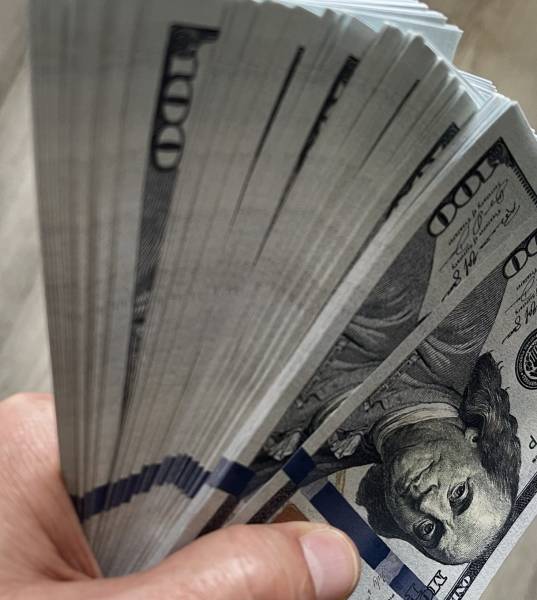Rising Interest Rates Bode well for the USD
The US Dollar Index is a critical determinant of demand for the USD. It measures the relative strength of the US dollar against a basket of currencies. The US dollar currency index designated by the ticker DXY measures the US dollar against a weighted basket of currencies.
These include the EUR, GBP, JPY, CAD, SEK, and CHF. Each currency in the index has a specific weight assigned to it, with the USD as the base currency. The more significant the currency is vis-a-vis trading activity with the US, the greater the value in the index.
- Euro –57.6 %
- Japanese Yen – 13.6%
- British pound – 11.9%
- Canadian dollar – 9.1%
- Swedish krona – 4.2%
- Swiss franc – 3.6%
The US dollar currency index trades on the Intercontinental Exchange, a.k.a., ICE. For currency traders, the USDX is an important barometer of the overall performance of the US dollar. When the index rises, demand for the USD rises, and vice versa.
Example: As of July 2022, the DXY had a 52-week trading range of 91.78 on the low end and 105.79 on the high end. Global inflationary pressures were brought to bear in mid-2021, resulting in a steadily increasing DXY. As a case in point, the 1-year performance of the DXY measured 13.66% heading into Q2 2022.
Correlation between DXY and VIX
Currency traders can glean important information from key indices. Demand for USD tends to be closely correlated with growing global uncertainty. The greater the volatility in the stock market, as indicated by the VIX (Volatility Index), the higher the level of the VIX.
The Fear Index is one of the most closely-watched measures of stock market performance. When the volatility index reading is high, this tends to suggest a risk-off approach active in the markets. When volatility rises, stocks sell off en masse.
As a forex trader, it’s important to take heed of correlations between different indices. The strength of the USD hinges upon speculators in the global market. FX traders routinely use forex automated trading strategies to buy or sell currency pairs. These automated trading systems closely monitor the performance of the DXY and the VIX for notable changes.
A sudden uptick tends to accelerate demand for dollar purchases, as evidenced by net long positions in the forex market. The DXY is also important as FX traders can use it to highlight reversal points.
Why Does Global Economic Uncertainty Draw in the Dollar Bulls?
Developed economies tend to benefit from global economic downturns. However, in a risk-off trading environment, the minor currency pairs and exotic currency pairs tend to get the short end of the stick. As investments are pulled from stock markets worldwide, they are diverted into safe-haven alternatives.
These include gold (physical bullion, ETFs, and stocks). Other options include fixed-interest-bearing accounts such as i-Series bonds (pegged to the inflation rate), real estate, and desirable currencies such as the JPY, GBP, EUR, and USD.
It is possible for central banks around the world to simultaneously raise interest rates to prevent mass selloffs of their currencies. But trade in non-USD currencies pales in comparison to dollar-denominated transactions.
Rising inflation means that the costs of a basket of goods and services is rising relative to the price a year ago. To combat this, the Fed increases interest rates. This has a profound effect on the USD. Rising rates mean that higher interest is paid on dollar-denominated accounts.
Safety in Dollars
Foreigners prefer the relative safety of USD-backed securities, find cheap investment opportunities, and savings over the relative insecurity of less desirable currencies. The US government issues Treasury bonds precisely for this purpose. Backed by the stability of the Federal Reserve Bank, government bonds are not seen as a risky asset.
The more people trade USD, the greater the value of the dollar relative to other currencies. However, all economic activity has positive and negative effects. For the US, a strong USD means that imports are relatively cheaper per unit USD, but exports tend to suffer because it costs more in foreign currency to buy the same US-produced goods.
This negatively affects the trade balance. Companies tend to shift capital around when currencies are too strong, preferring instead to base their operations abroad where it is relatively cheaper to produce and sell. Naturally, dollar strength or weakness is variable. The actions of the Fed, through interest-rate movements, are paramount.
The USD is likely to remain in demand for as long as the Fed aggressively pursues quantitative tightening by raising rates & selling government bonds. These monetary policy measures can be coupled with fiscal policies to increase tax rates on the wealthy. These measures are designed to curb spending and put the brakes on runaway inflation. In the interim, demand for the USD rises until an inflexion point is reached.

IntelligentHQ Your New Business Network.
IntelligentHQ is a Business network and an expert source for finance, capital markets and intelligence for thousands of global business professionals, startups, and companies.
We exist at the point of intersection between technology, social media, finance and innovation.
IntelligentHQ leverages innovation and scale of social digital technology, analytics, news and distribution to create an unparalleled, full digital medium and social business network spectrum.
IntelligentHQ is working hard, to become a trusted, and indispensable source of business news and analytics, within financial services and its associated supply chains and ecosystems.












